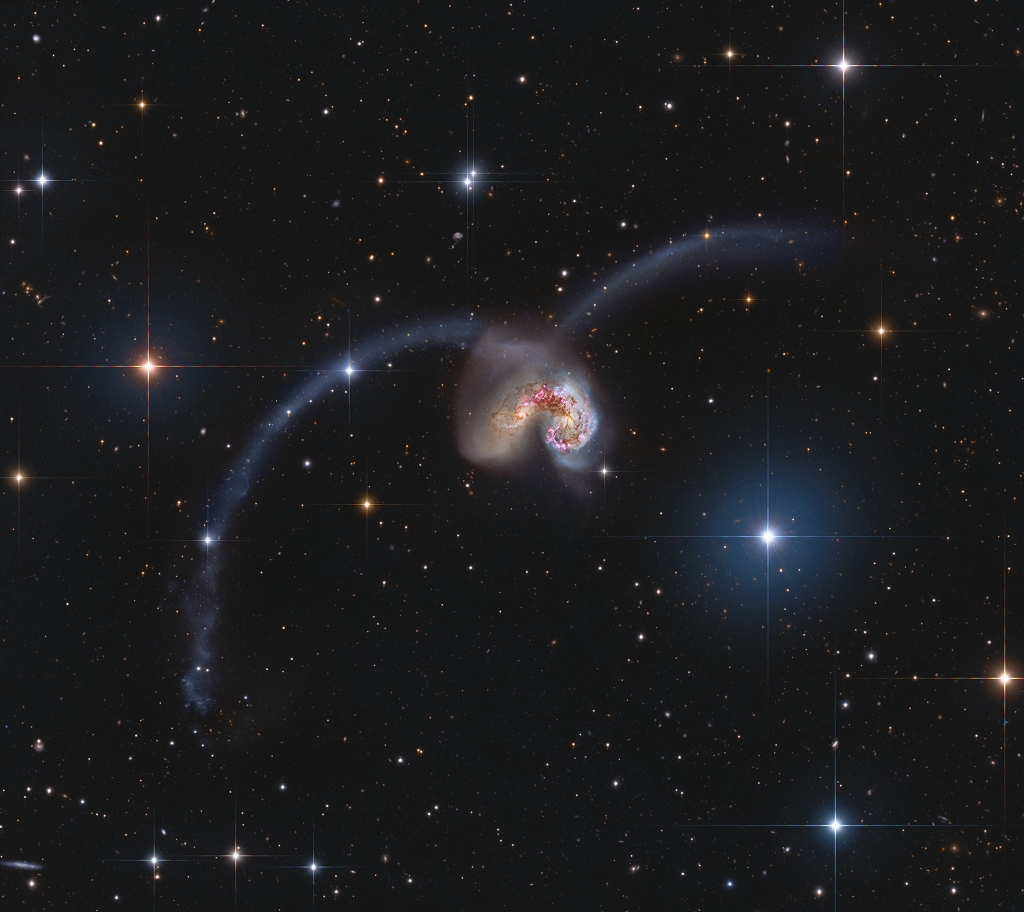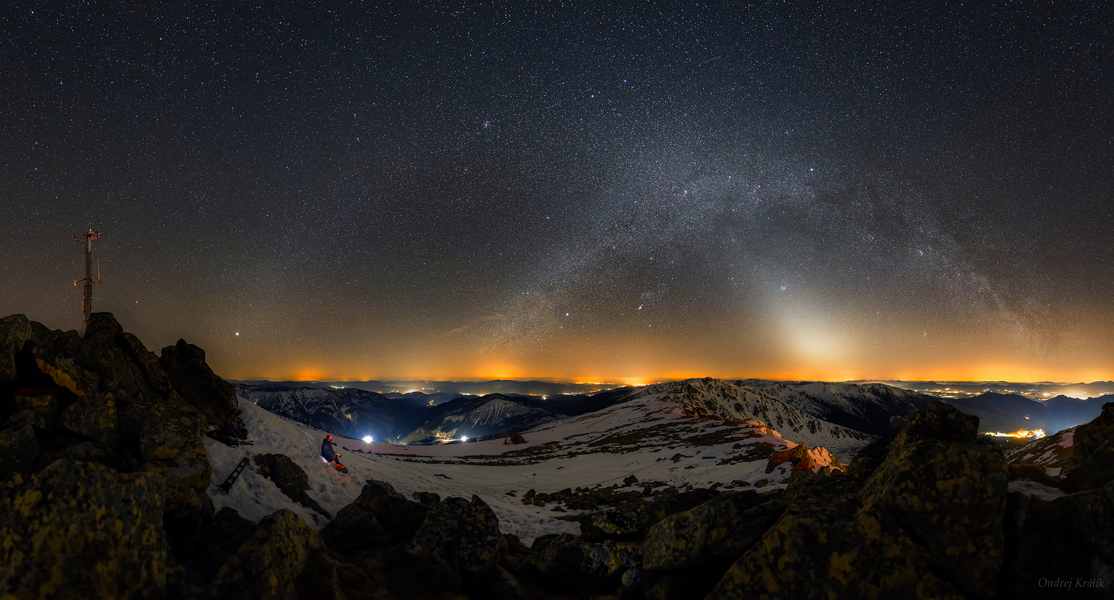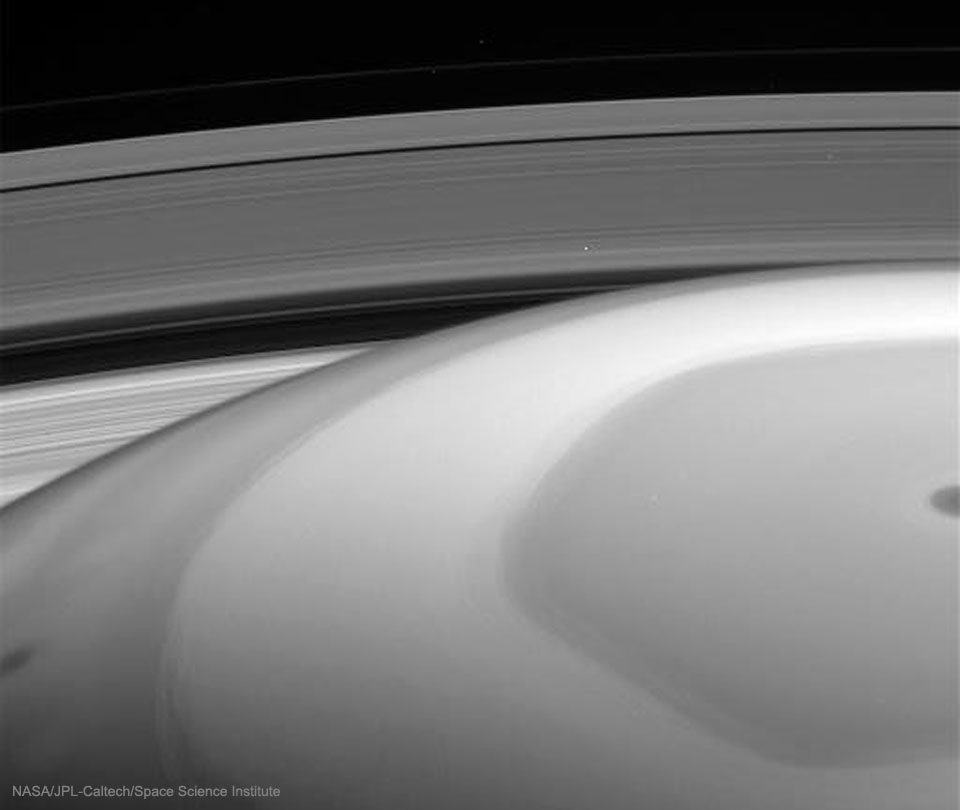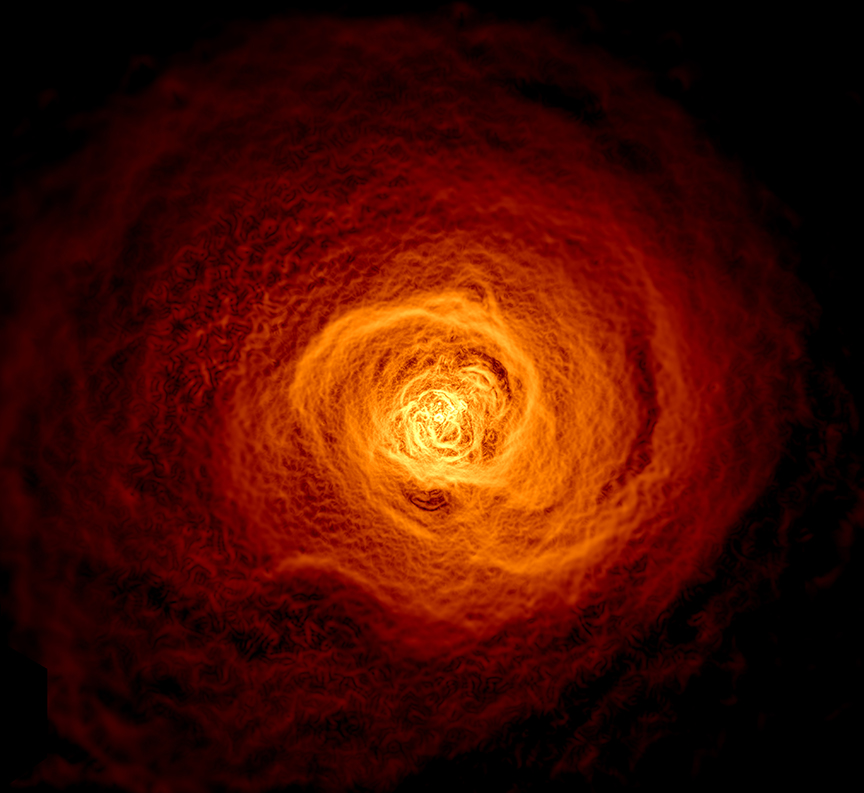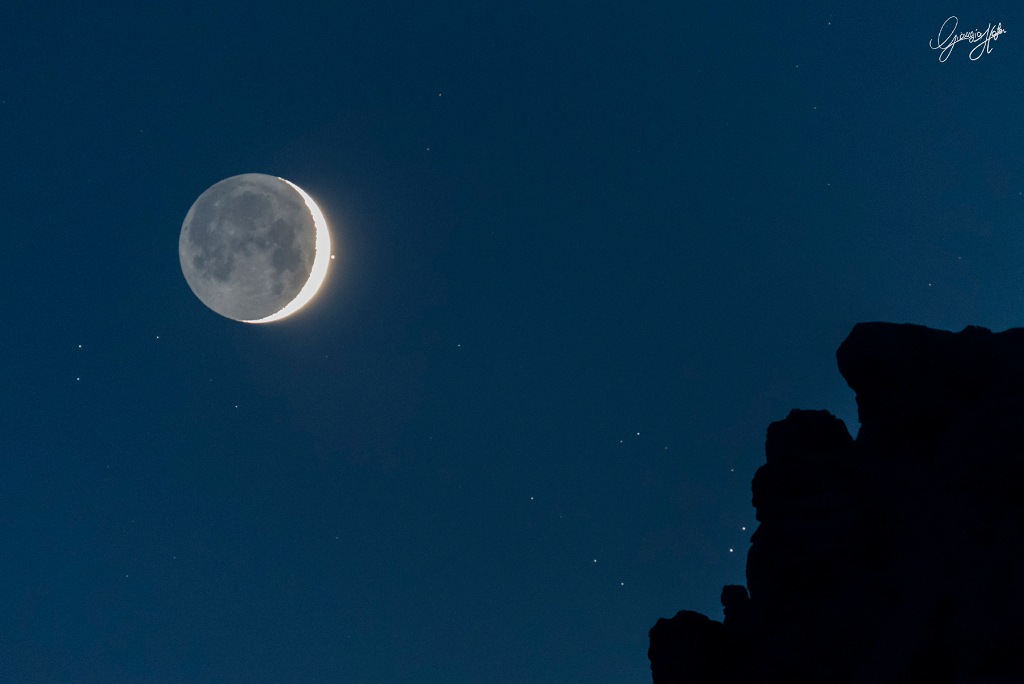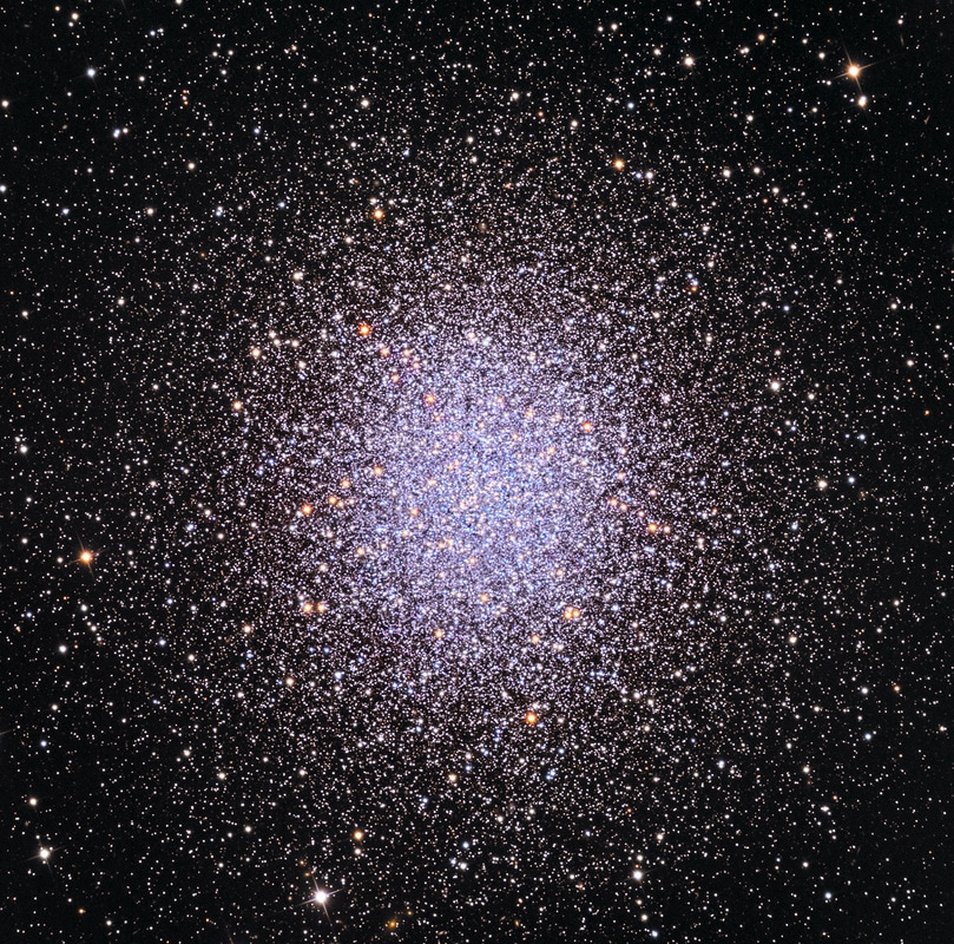Discover the cosmos! Each day a different image or photograph of our fascinating universe is featured, along with a brief explanation written by a professional astronomer.
2017 April 25
Explanation: What's happened to Comet Lovejoy? In the pictured image, a processed composite, the comet was captured early this month after brightening unexpectedly and sporting a long and intricate ion tail. Remarkably, the typically complex effect of the Sun's wind and magnetic field here caused the middle of Comet Lovejoy's ion tail to resemble the head of a needle. Comet C/2017 E4 (Lovejoy) was discovered only last month by noted comet discoverer Terry Lovejoy. The comet reached visual magnitude 7 earlier this month, making it a good target for binoculars and long duration exposure cameras. What's happened to Comet Lovejoy (E4) since this image was taken might be considered even more remarkable -- the comet's nucleus appeared to be disintegrating and fading as it neared its closest approach to the Sun two days ago.
2017 April 25


